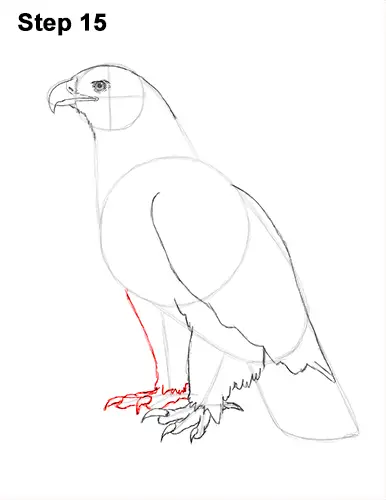
Step 15: Now draw the golden eagle's other leg by using the lines that are under the body on the left side as guides. Follow the basic path of the guide but make the shape of the leg thicker. Add some quick, short strokes at the bottom for the feathers. Use the smaller lines as guides to draw the indvidual toes and talons. The toes will overlap each other somewhat because of the perspective, so don't draw a couple of them.
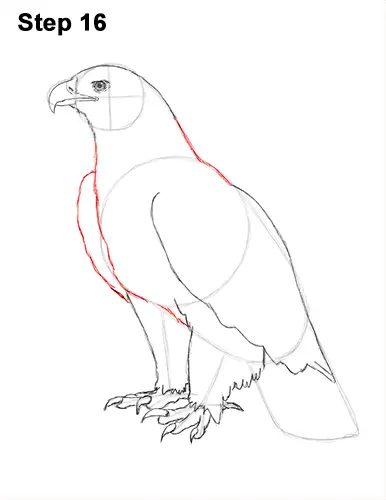
Step 16: Use the initial shapes and lines as guides to draw the shape of the golden eagle's body. Simply follow the path of the guides and darken their outer edges to complete the shape of the body. Draw a long curved line on the left side of the body for the other folded wing.
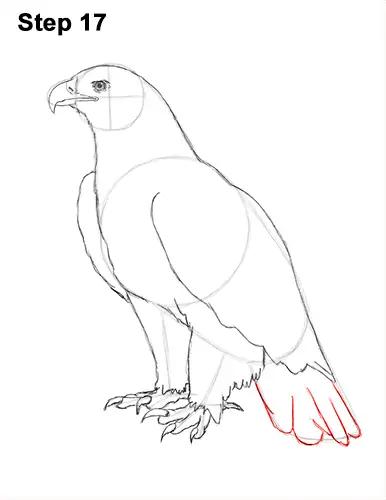
Step 17: Use the lines on the lower right side of the body as guides to draw the golden eagle's tail. Draw a series of long, thin, U-shaped arcs within the guides to represent the individual tail feathers.
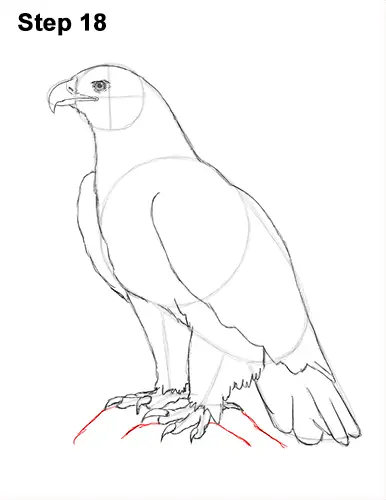
Step 18 (optional): Draw a couple of short curved lines under the feet to give the golden eagle something to stand on.
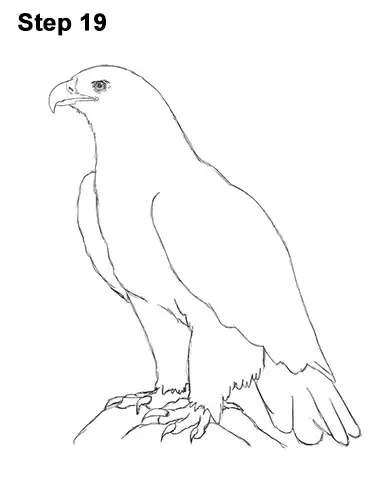
Step 19 (optional): For a cleaner look, erase as much as you can of the initial guide lines. Don't worry about erasing all of the guides. It's okay to leave some behind. Re-draw any final sketch lines that you may have accidentally erased.
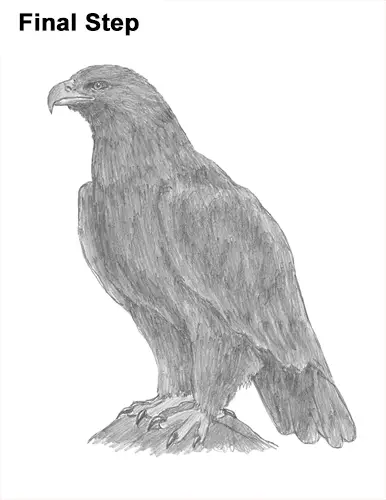
Final Step (optional): Add some shading throughout your drawing for extra detail. Golden eagles are basically a solid brown color with very little pattern, so simply add a medium value to your whole drawing. As you shade, use strokes that go in the general direction of the feathers. Use strokes with a horizontal orientation on the head, then gradually turn them so that they're vertical on the body. You can also leave the head and tail blank and turn this into a bald eagle!
As you shade, make the lower edges of the individual shapes darker to give the golden eagle's body more dimension and volume. Vary the pressure on your pencil to get different degrees of tonal value. Add the value lightly at first, then gradually build up to the level of darkness that you want. Shading can be very time-consuming, so be patient and take breaks.
Use different degrees of value on the bottom edge of the golden eagle's folded wing to represent the individual feathers. Continue shading until the entire body is covered in value. You can shade different sections at a time to break up the process. It's always a good idea to use reference as you draw. And remember to pause the video to draw at your own pace.
Thanks for watching! Subscribe to the How2DrawAnimals YouTube Channel for a new tutorial every Tuesday.
To learn how to draw popular cartoon characters, visit EasyDrawingTutorials.com.
RELATED TUTORIALS
 |
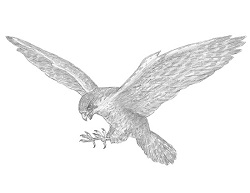 |
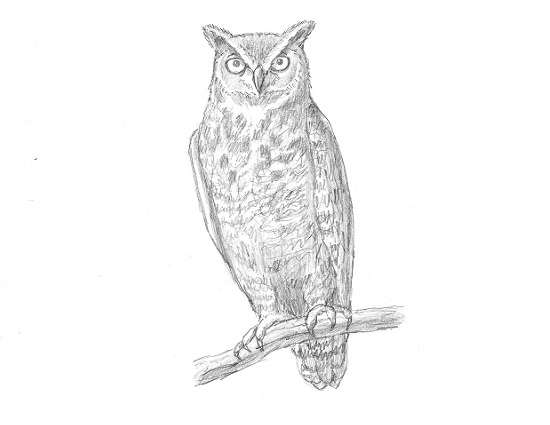 |







